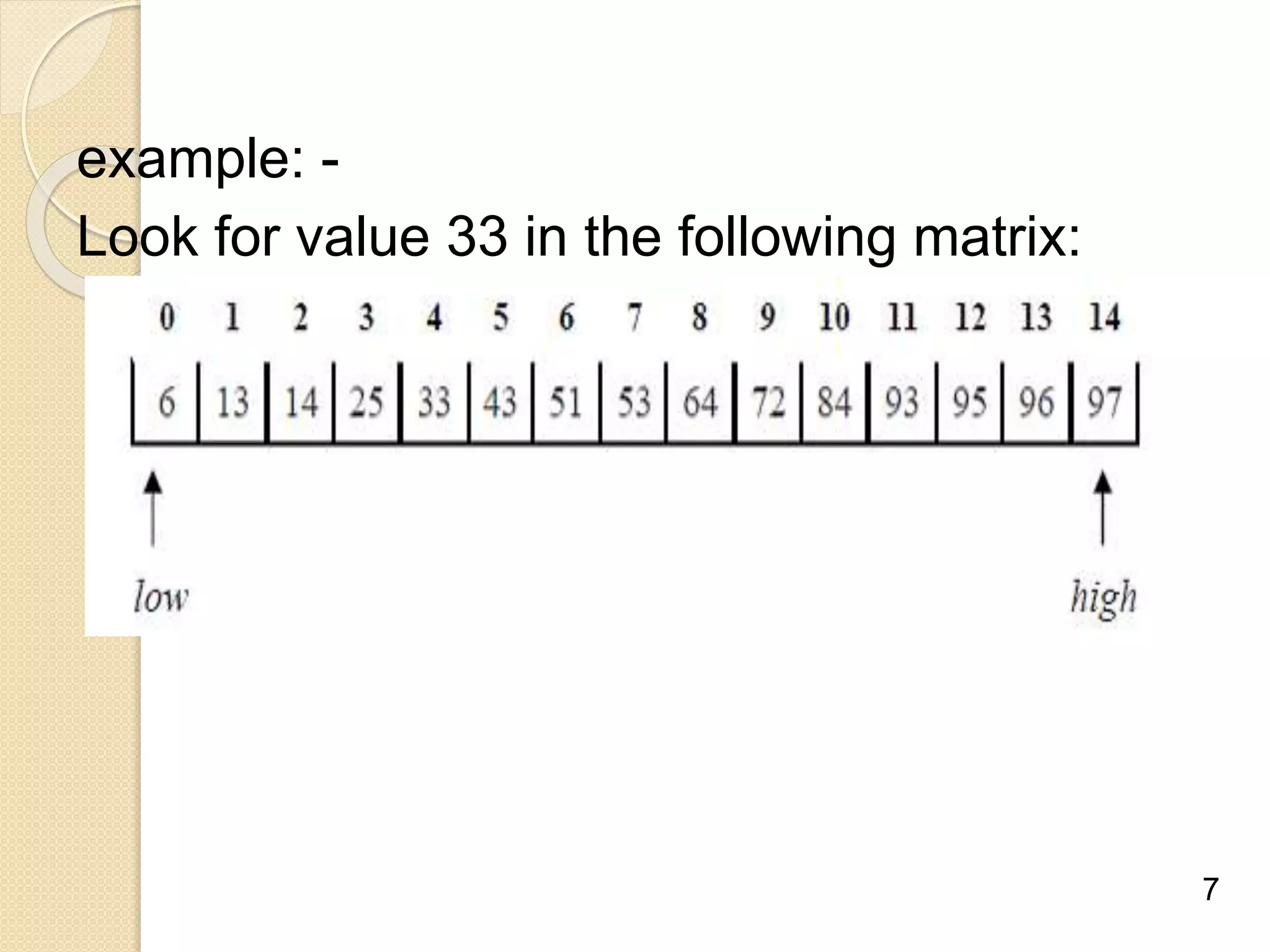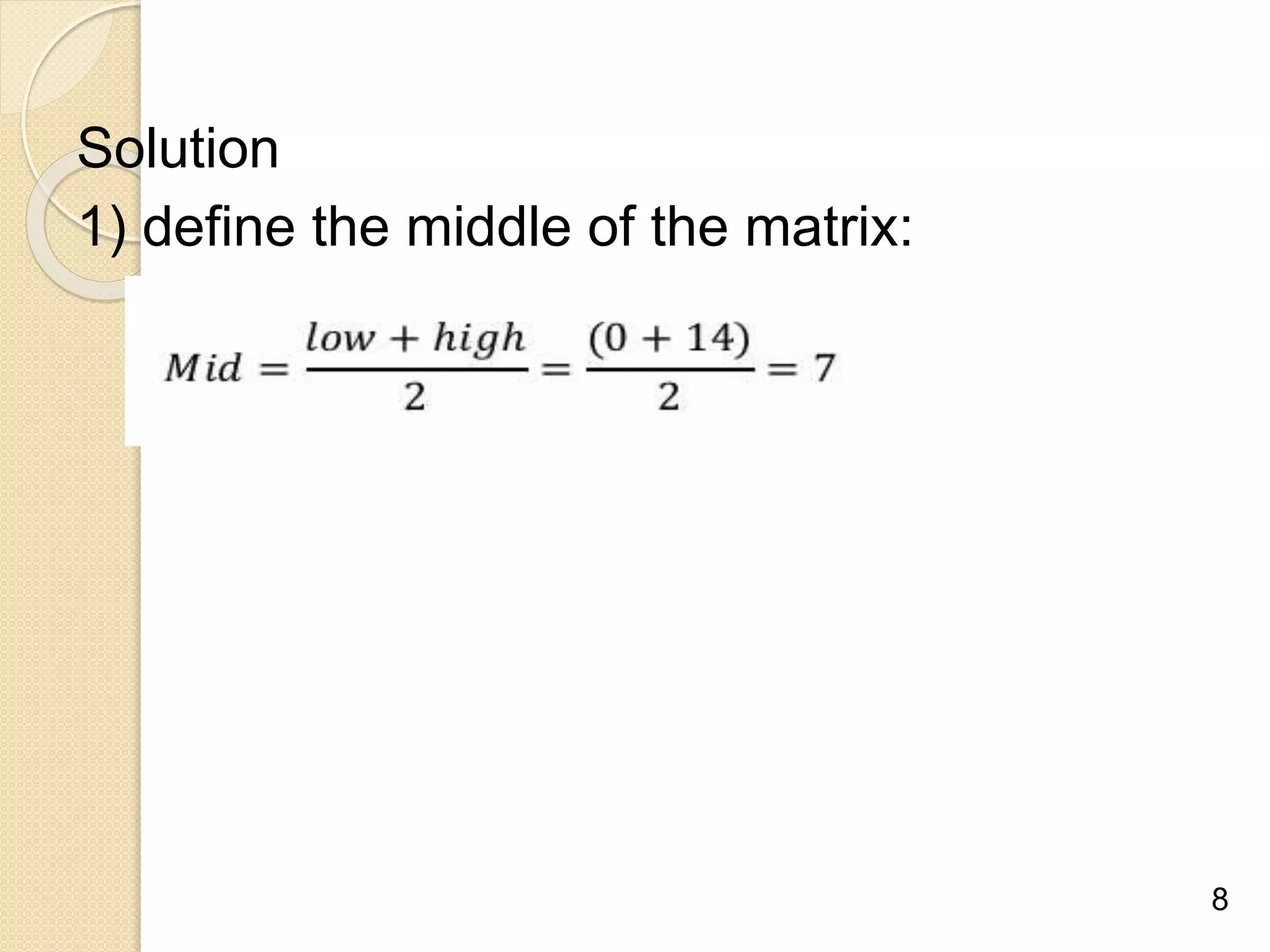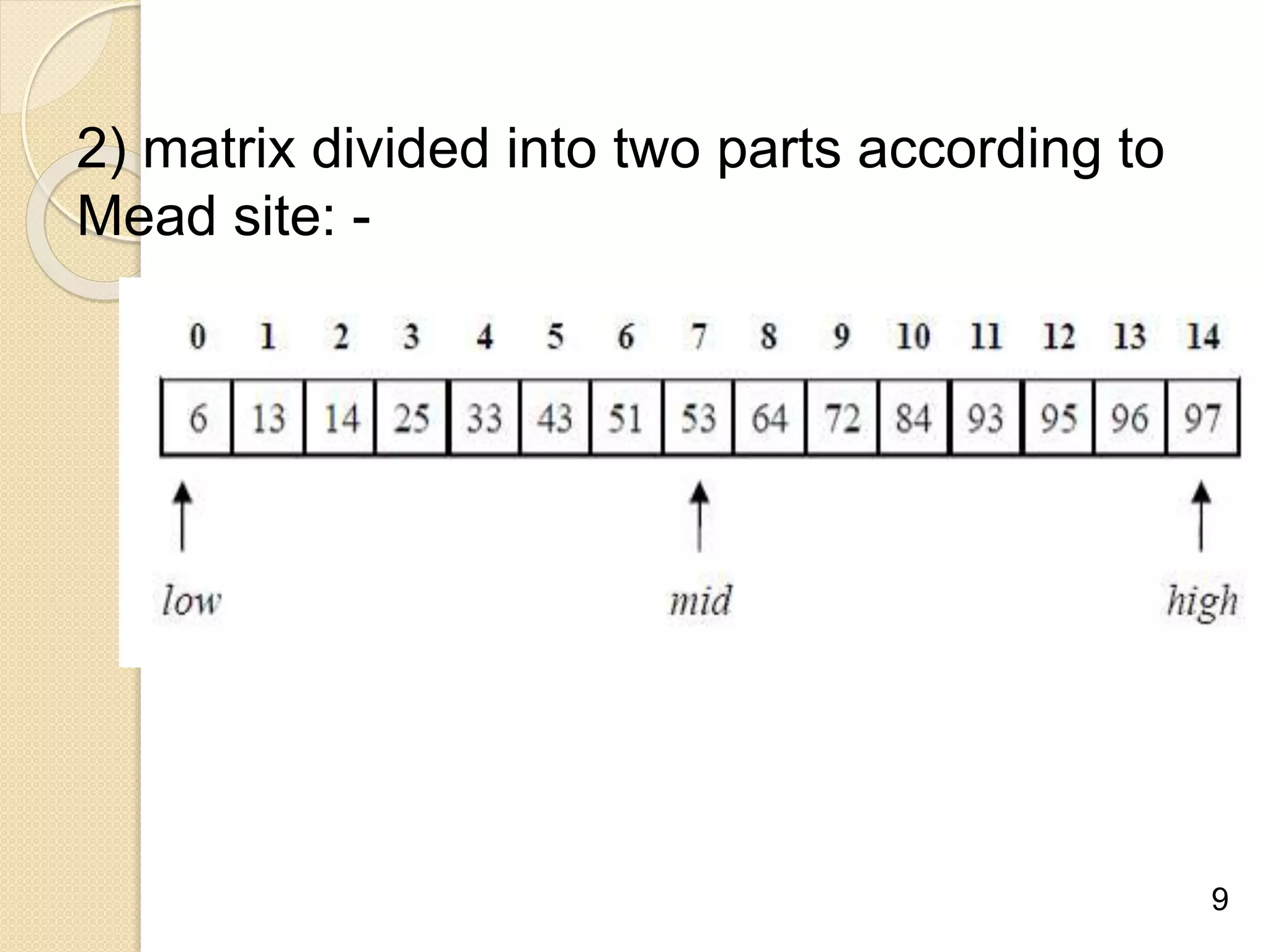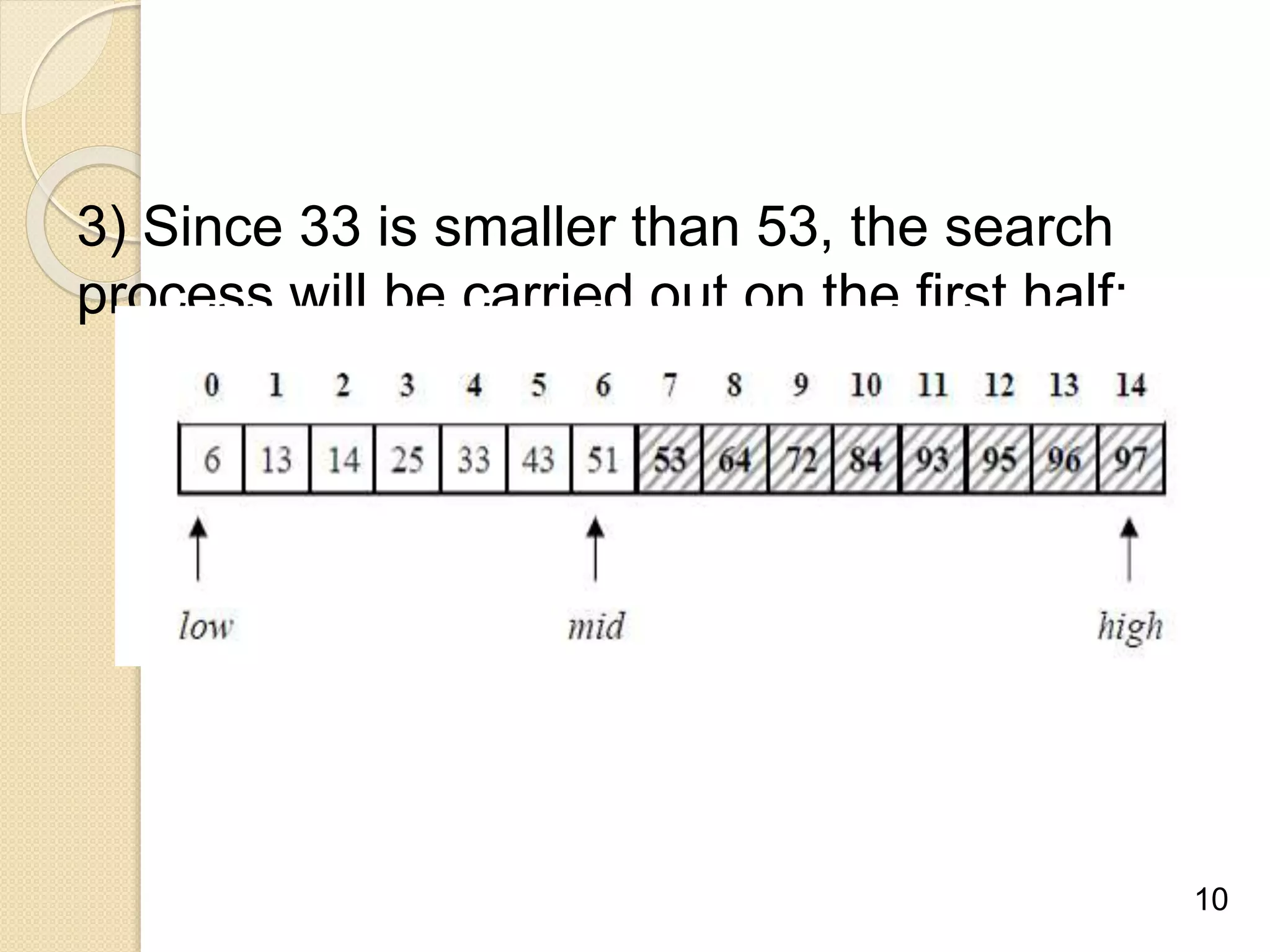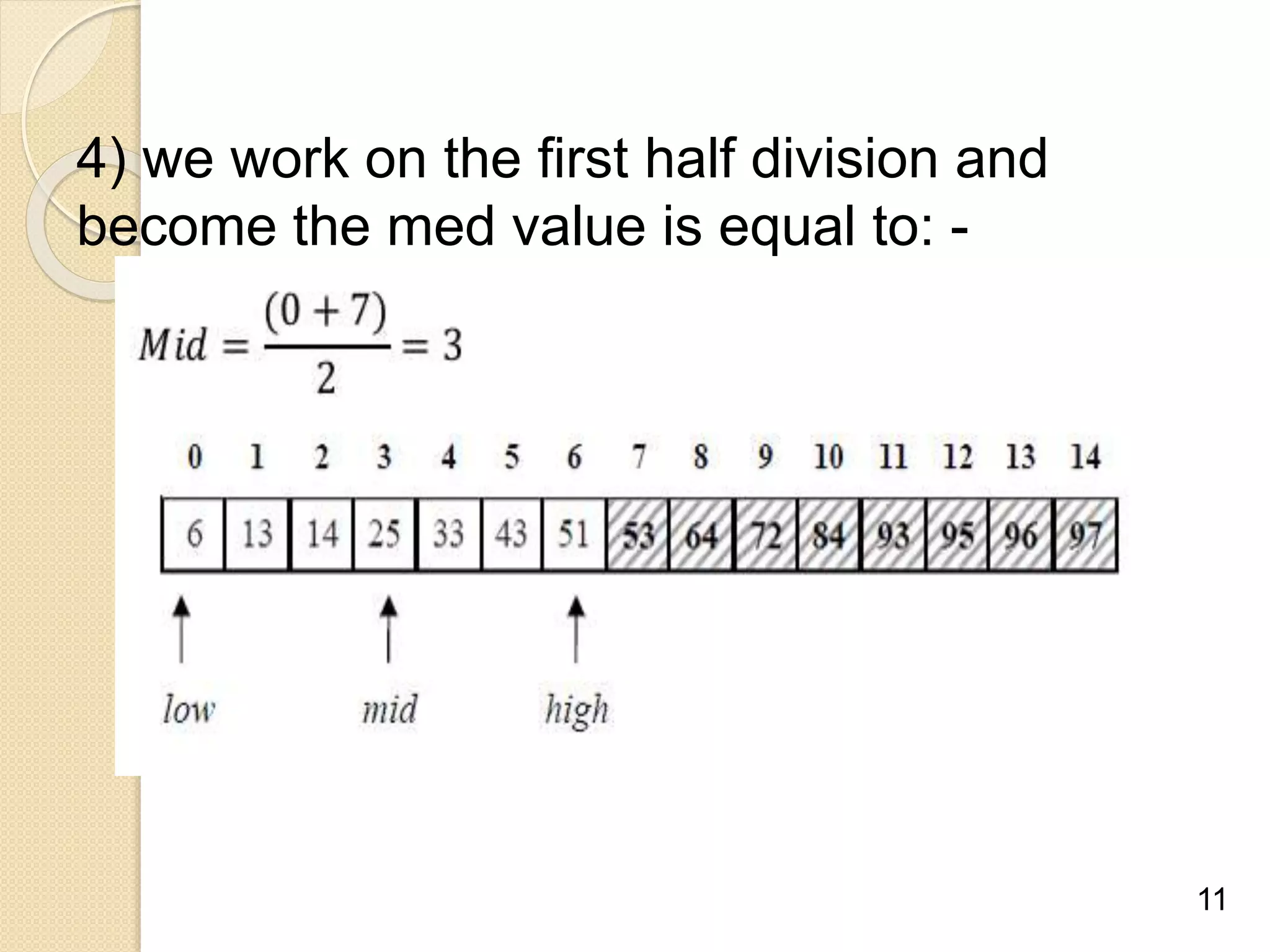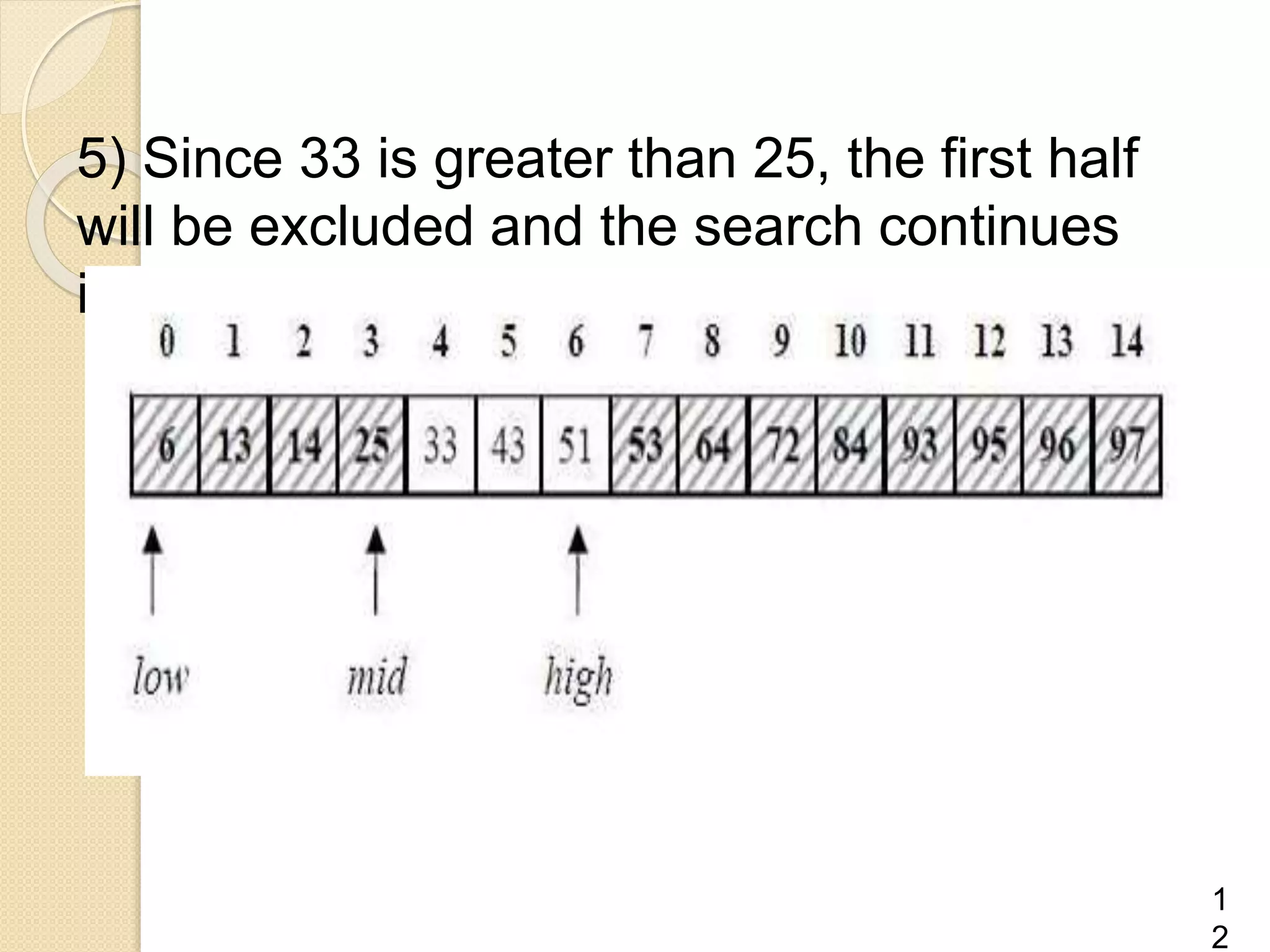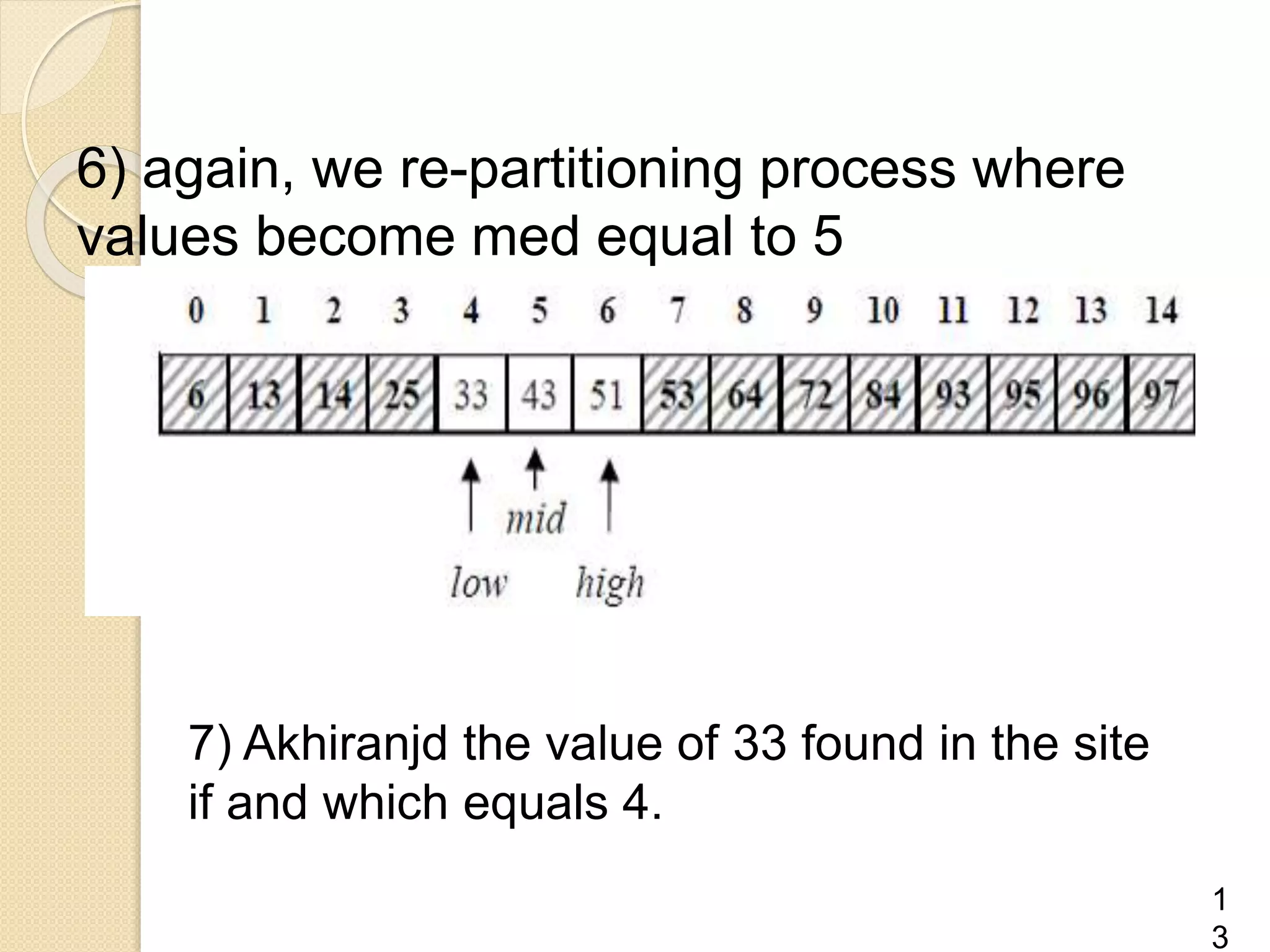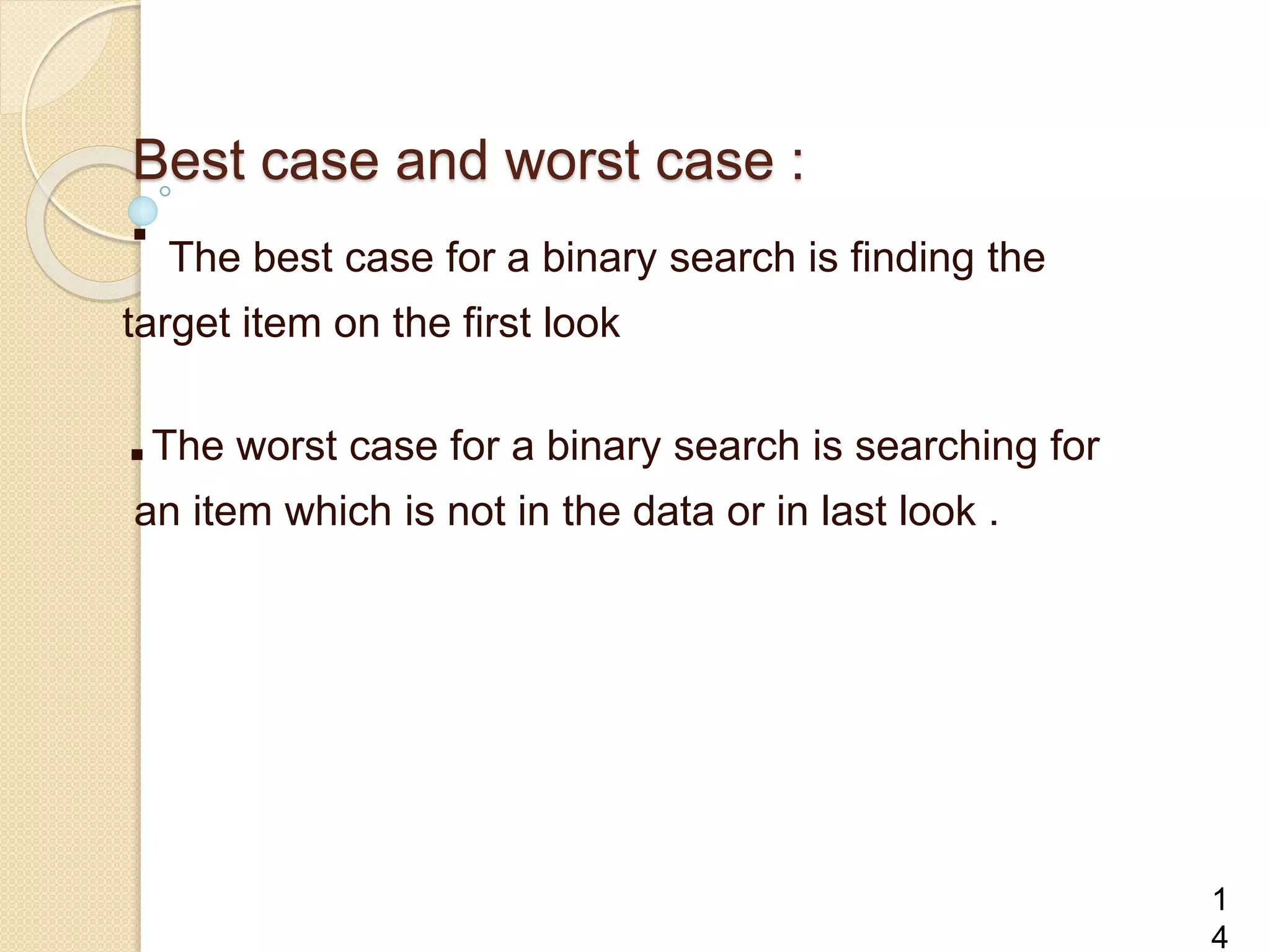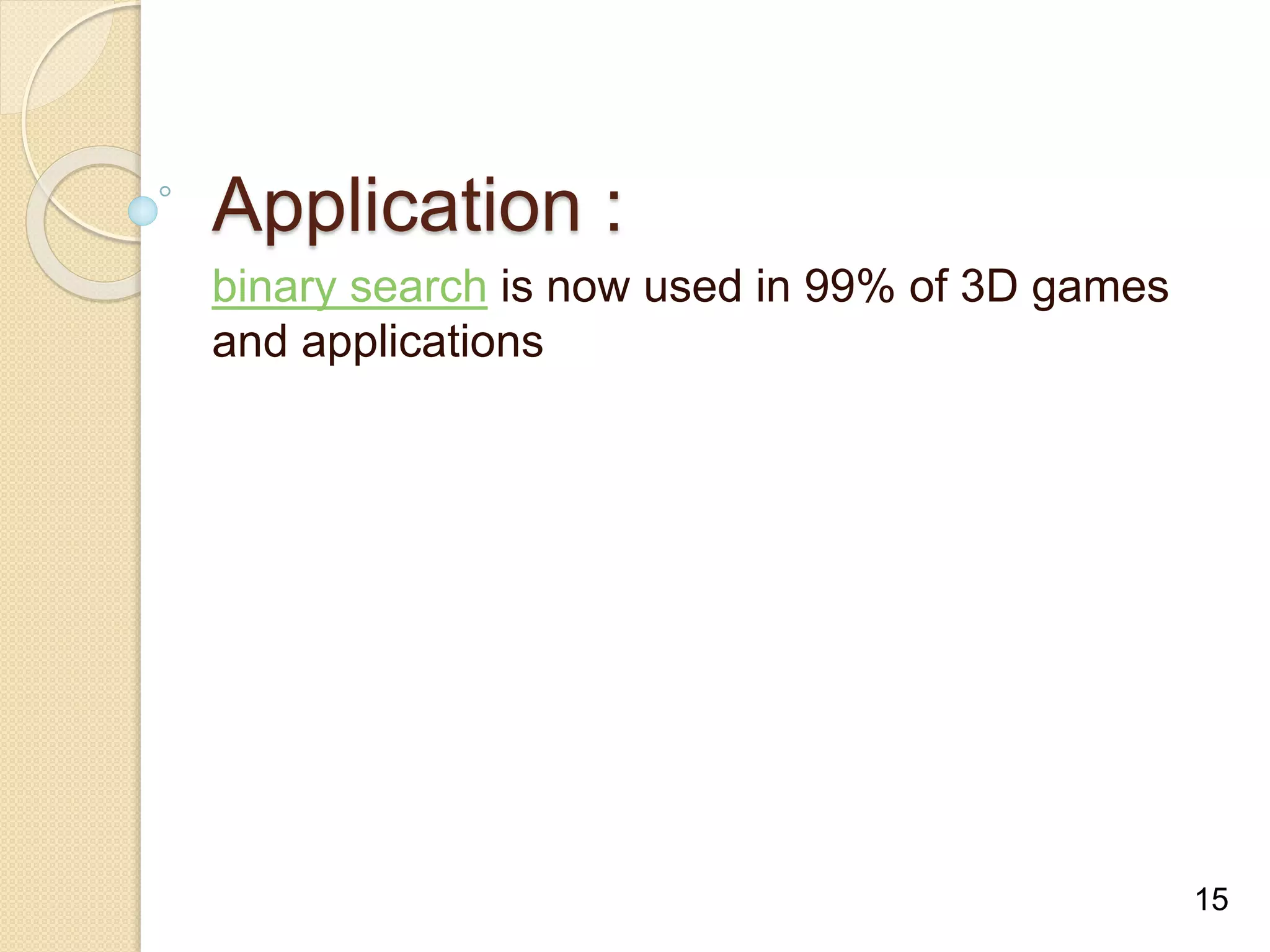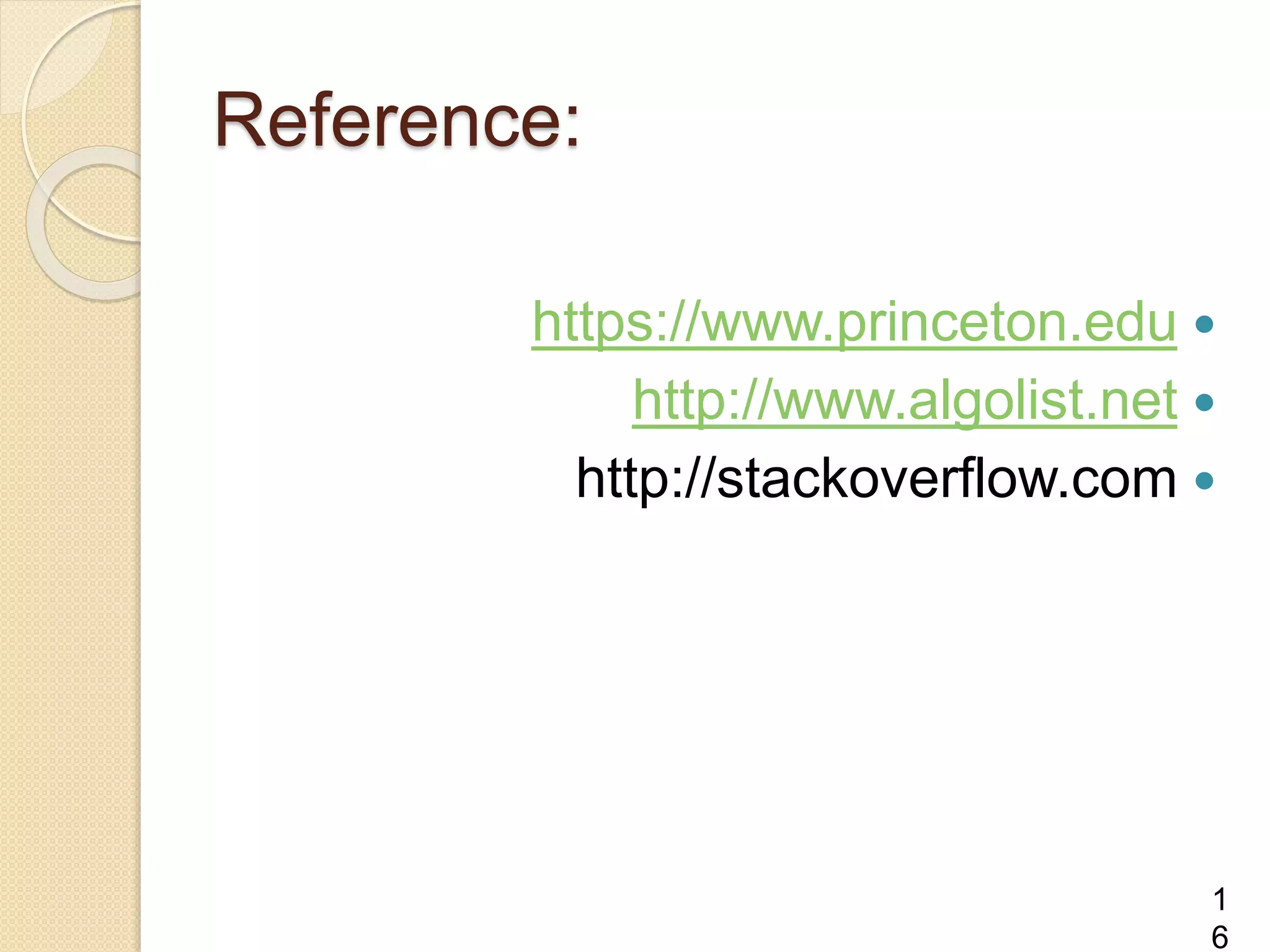Binary search is an efficient algorithm for finding a target value within a sorted list or matrix. It works by repeatedly dividing the search space in half and eliminating half of the elements from consideration. The steps are: 1) sort the array, 2) set boundaries for search space, 3) check middle element and eliminate half based on comparison to target, 4) repeat until target is found or eliminated. It has best case performance of O(1) when finding the target on the first try, and worst case of O(log n) when searching the entire space. Binary search is commonly used to quickly find values in applications like computer games.

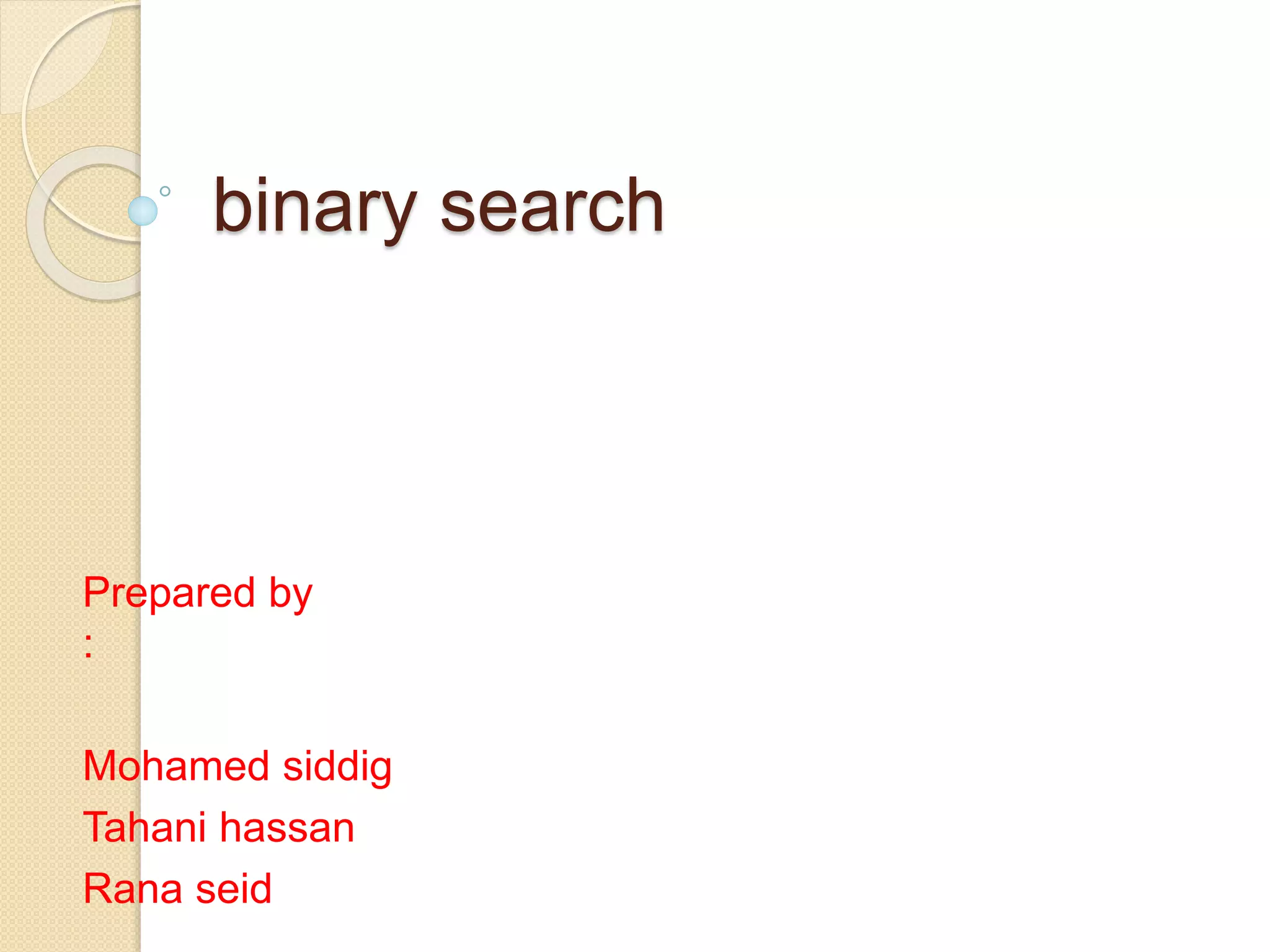
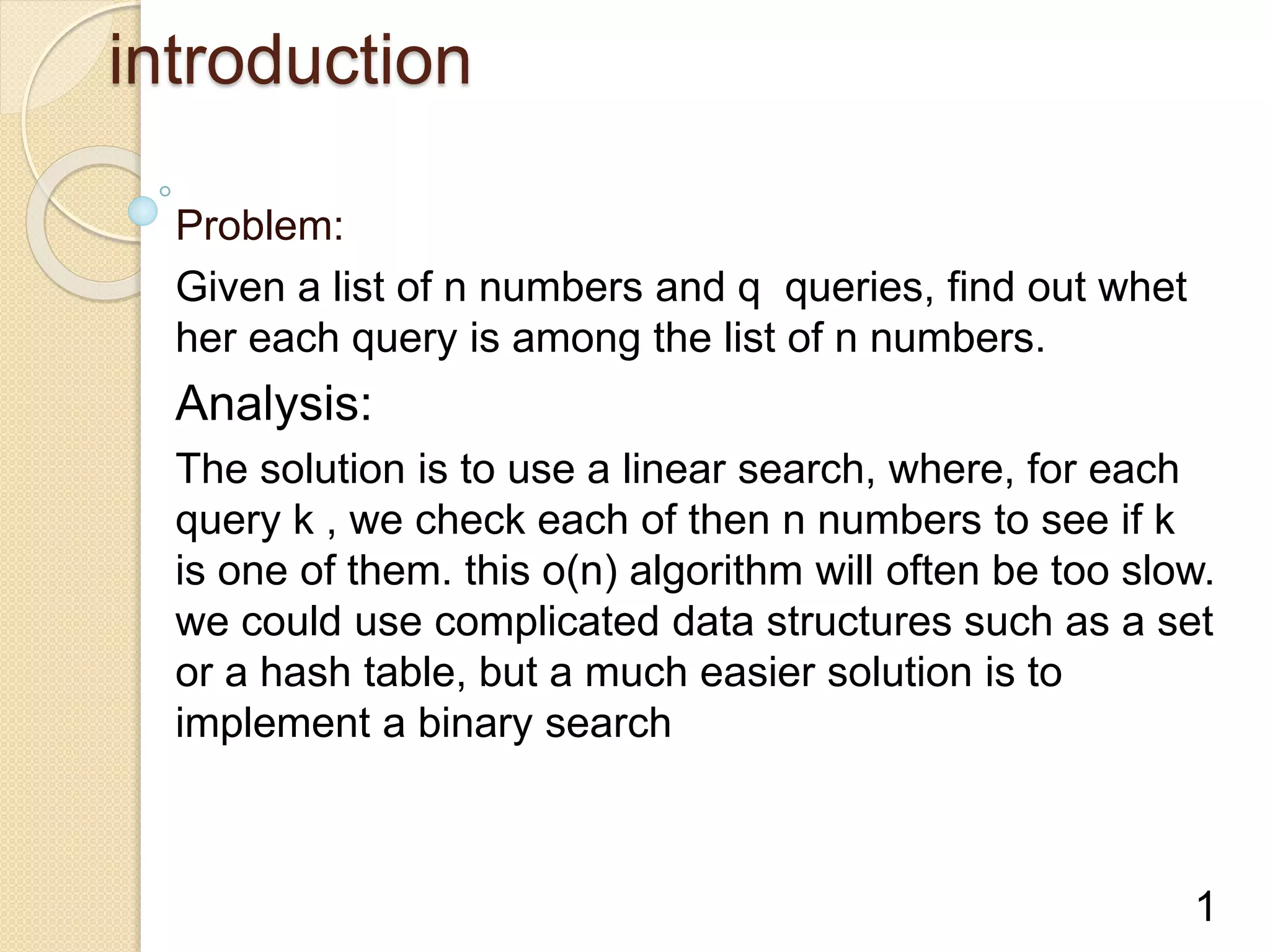

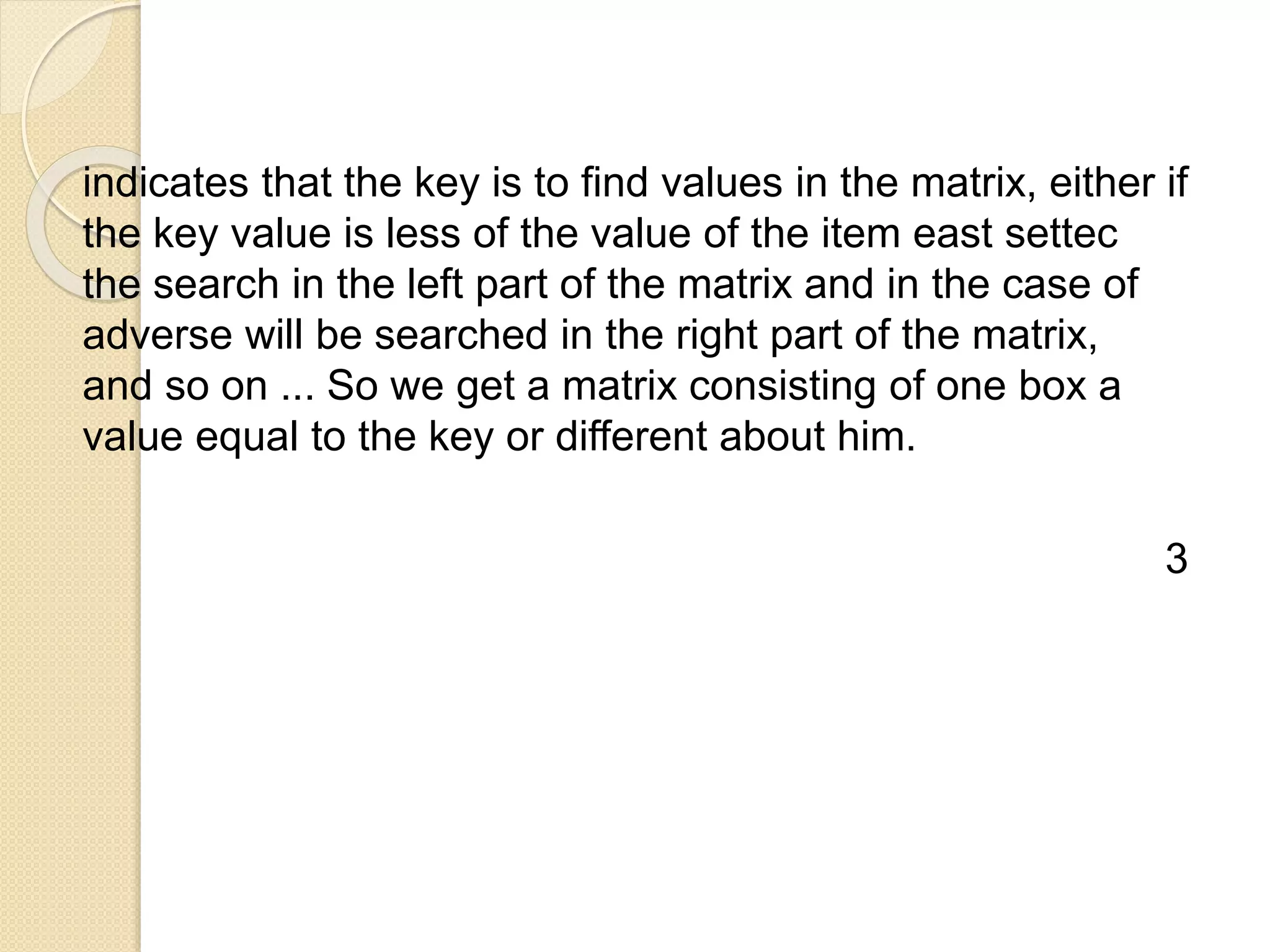
![The steps of an algorithm:
1. sort array descending or ascending
2. Set low=0 and high=length-1
3. If low not smaller or not equal high go to 8:
4. Set middle =(low + high)/2
5. If target equal array [middle] go to 9
6. If target large then array[mid] set low =mid+1 t and go to 3.
7. If target smaller than array[mid] set high=mid-1 and go to 3
8. Print target not found and go 10
9. return middle
10. End function
4](https://image.slidesharecdn.com/binarysearch2-150123153310-conversion-gate01/75/Binary-search2-6-2048.jpg)
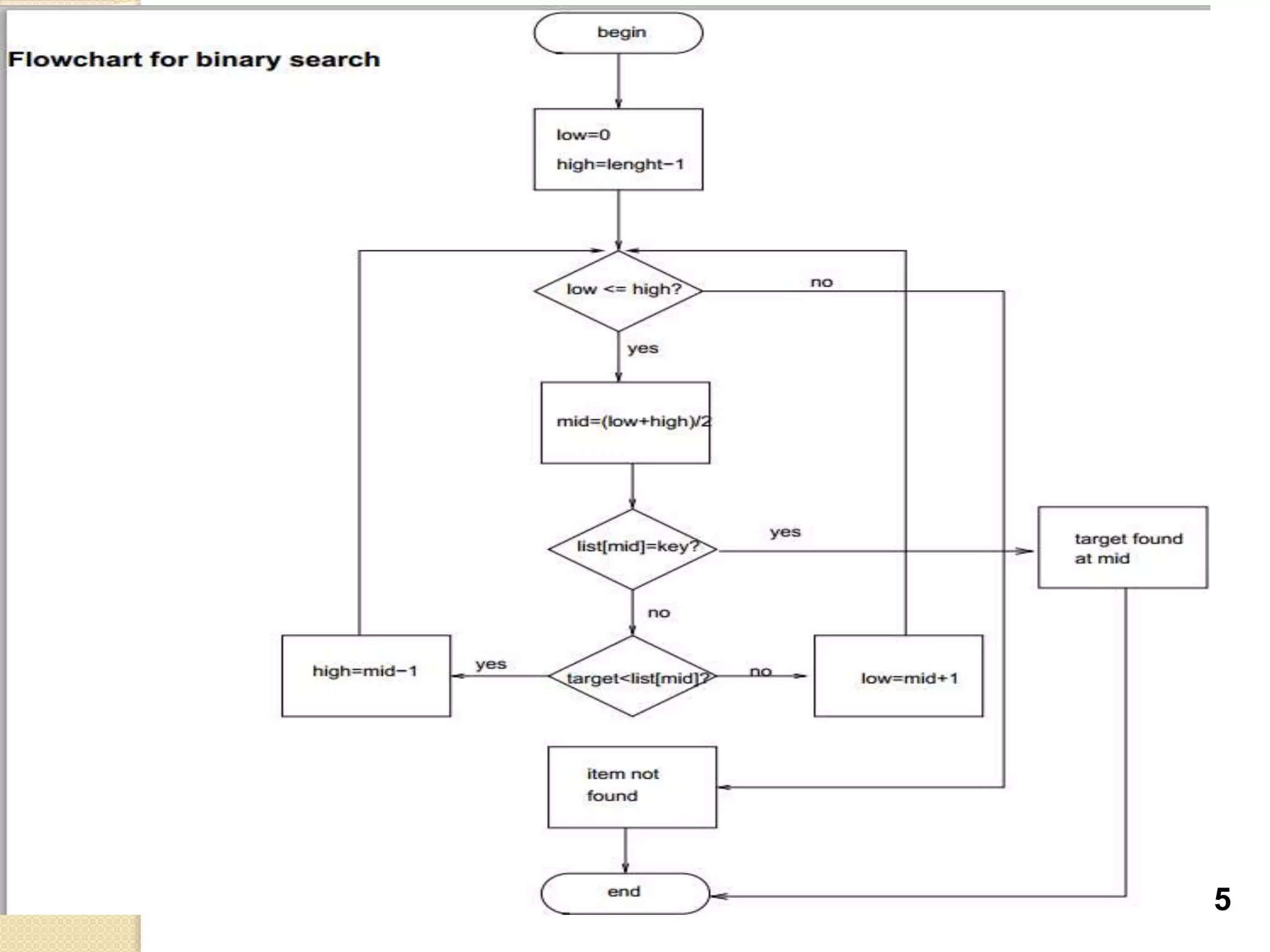
![Code :
int binary_search(int a[], int low, int high, int target)
{
while (low <= high)
{
int middle = (low + high)/2;
If(target==a[middle] )
return middle;
else if (target < a[middle])
high = middle - 1;
else if (target > a[middle])
low = middle + 1;
}
return -1;
}
6](https://image.slidesharecdn.com/binarysearch2-150123153310-conversion-gate01/75/Binary-search2-8-2048.jpg)
